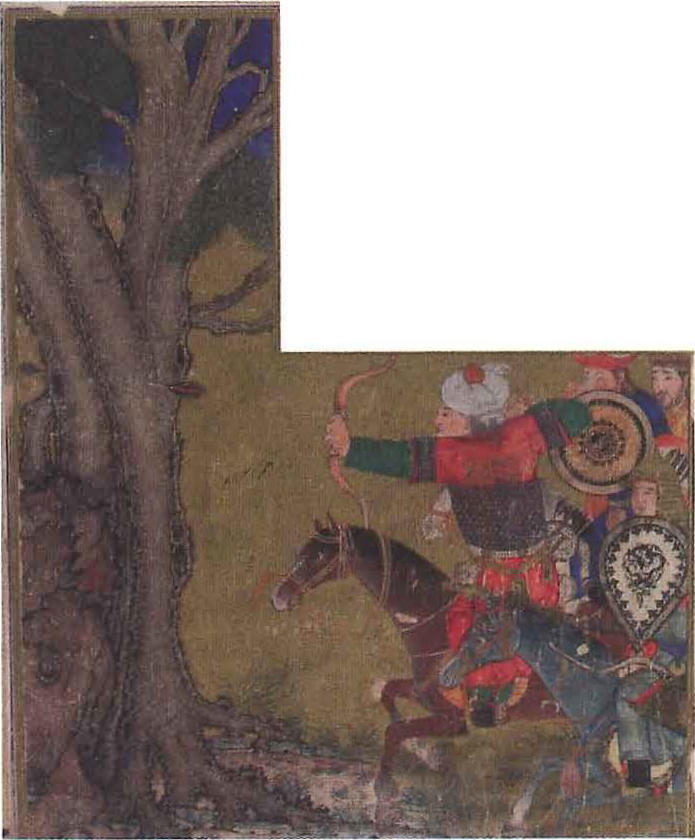Shop Amazon - Create an Amazon Baby Registry

Create an Amazon Business Account
Zāl Showing his Skill to Minūchihr by Piercing the Trunk of a Tree with an Arrow
Illustrations of Ilkhanids or Jalayrids from a 14th Century Shahnama

From the Sarai Albums, Tabriz, 14th century. Topkapi Sarai Museum, Hazine 2153, folio 112v.
Source: "The Great Mongol Shahnama: Some Proposed Repatriations", in J.Gonnella, F.Weis and C.Rauch (eds), The Diez Albums. Contexts and Contents (Leiden and Boston, 2017), 441-68.
Referenced as figures 181 & 182 in: M. GORELIK, "Oriental Armour of the Near and Middle East from the Eighth to the Fifteenth Centuries as Shown in Works of Art", in: Islamic Arms and Armour, ed. ROBERT ELGOOD, London 1979
The Iranian shields of the second half of the fourteenth century were generally round, often made of concentric rods, with a steel umbo (fig. 180; 44, 48), known under the Turkic name kalkan, or are painted leather shields with a metal umbo and edge (fig. 181; 47).
The handle of the shields consisted of either two straps or a string (44).
The Iranian kite shield of wood and painted leather appeared for the last time in the 1370s (fig. 182).
The size had become rather standardized and covered the body from the waist to the neck.
Zāl Showing his Skill to Minūchihr by Piercing the Trunk of a Tree with an Arrow (fig. 9)
When Zāl takes a letter to Minūchihr from his father, Sām, he is asked several puzzles.
Minūchihr is highly pleased when Zāl answers them correctly.
A banquet is given, and the next day several champions show their skill.
Zāl, thereupon, shoots an arrow at an old tree; such is his strength that the arrow comes out at the opposite side of the trunk.
This feat produces great admiration by the others.
The background of the L-shaped painting is gold.
The right corner must have been cut to make place for the flower motif on silk which is pasted there (not illustrated).
On the left is a large tree pierced by an arrow.
On the right the figure of Zāl, who is flanked by the spectators and the tree, immediately draws our attention.
He is depicted at the moment the arrow left his bow, with his arms outstretched.
His back is toward us, and we see him in profile.
Behind him a group of Minūchihr’s men stand watching with their shields in their hands.
In the space between Zāl and the tree we read the words “Zāl, Kār-i Ahmad Lachīn (Zāl, the work of Ahmad Lachīn).”
The colors of this miniature are dark blue, brown, green, black, white, orange, red, and yellow.
Text source: "Four Istanbul Albums and Some Fragments from Fourteenth-Century Shah-Namehs" by Nurhan Atasoy, pp. 19-48 in Ars orientalis; the arts of Islam and the East Vol. 8 (1970)
Back to Ilkhanids or Jalayrids from a 14th Century Shahnama Tabriz, Iran. Topkapi Sarai Museum, Ms Hazine 2153.

